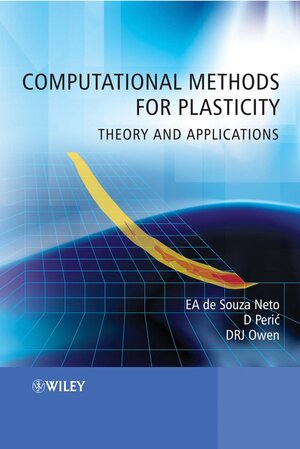
×
![Buchcover ISBN 9781119964544]()
Computational Methods for Plasticity
Theory and Applications
von EA de Souza Neto, D Periæ und DRJ OwenThe subject of computational plasticity encapsulates the numericalmethods used for the finite element simulation of the behaviour ofa wide range of engineering materials considered to be plastic- i. e. those that undergo a permanent change of shape inresponse to an applied force. Computational Methods forPlasticity: Theory and Applications describes the theory of theassociated numerical methods for the simulation of a wide range ofplastic engineering materials; from the simplest infinitesimalplasticity theory to more complex damage mechanics and finitestrain crystal plasticity models. It is split into three parts -basic concepts, small strains and large strains. Beginning withelementary theory and progressing to advanced, complex theory andcomputer implementation, it is suitable for use at bothintroductory and advanced levels. The book:
* Offers a self-contained text that allows the reader to learncomputational plasticity theory and its implementation from onevolume.
* Includes many numerical examples that illustrate theapplication of the methodologies described.
* Provides introductory material on related disciplines andprocedures such as tensor analysis, continuum mechanics and finiteelements for non-linear solid mechanics.
* Is accompanied by purpose-developed finite element softwarethat illustrates many of the techniques discussed in the text, downloadable from the book's companion website.
This comprehensive text will appeal to postgraduate and graduatestudents of civil, mechanical, aerospace and materials engineeringas well as applied mathematics and courses with computationalmechanics components. It will also be of interest to researchengineers, scientists and software developers working in the fieldof computational solid mechanics.
* Offers a self-contained text that allows the reader to learncomputational plasticity theory and its implementation from onevolume.
* Includes many numerical examples that illustrate theapplication of the methodologies described.
* Provides introductory material on related disciplines andprocedures such as tensor analysis, continuum mechanics and finiteelements for non-linear solid mechanics.
* Is accompanied by purpose-developed finite element softwarethat illustrates many of the techniques discussed in the text, downloadable from the book's companion website.
This comprehensive text will appeal to postgraduate and graduatestudents of civil, mechanical, aerospace and materials engineeringas well as applied mathematics and courses with computationalmechanics components. It will also be of interest to researchengineers, scientists and software developers working in the fieldof computational solid mechanics.



